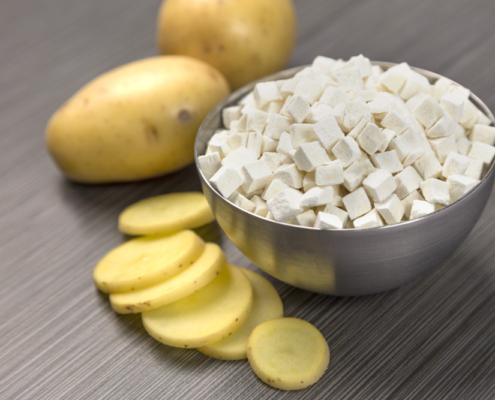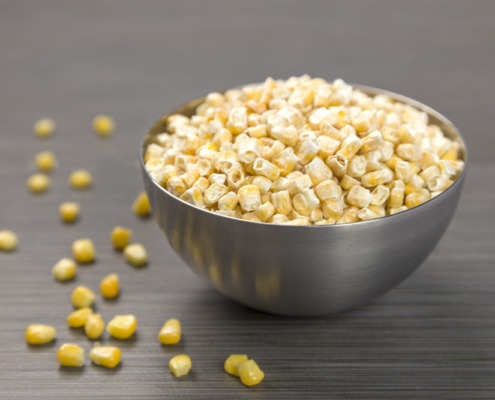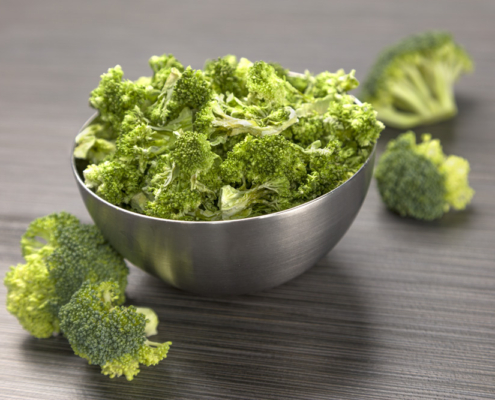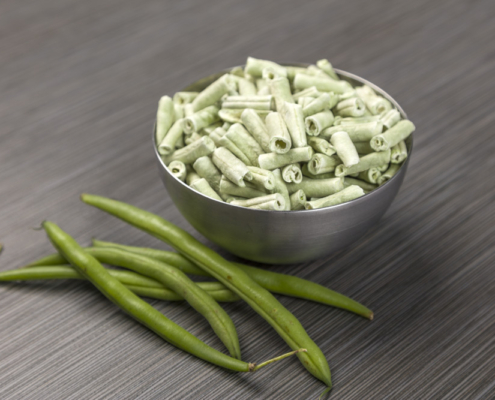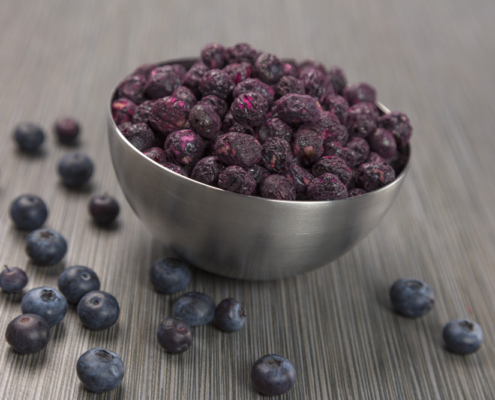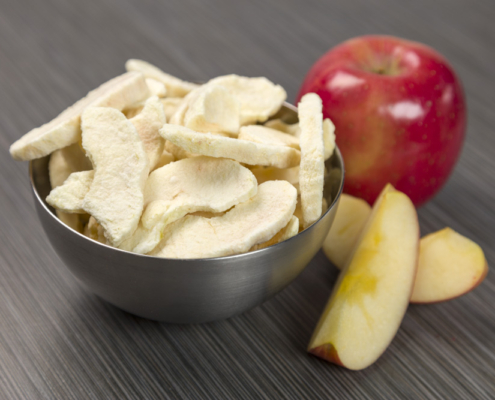Freeze-Dried vs. Dehydrated: What’s the Difference?
The two popular methods of freeze-drying and dehydration have gained widespread recognition for their ability to extend the shelf life of various food products. In this article, we’ll delve into the intriguing world of food preservation, in particular the differences between freeze-drying and dehydration.
The Basics of Freeze-Drying and Dehydration
Let’s start with the basics. Freeze-drying and dehydration are both methods used to remove moisture from food, thereby preventing spoilage. But how do they work?
Freeze-Drying:
Freeze-drying, also known as lyophilization, is a sophisticated and gentle food preservation method. Here’s how it works:
- Freezing: The process begins by freezing the food at extremely low temperatures. This step solidifies the water content within the food, turning it into ice.
- Sublimation: Once frozen, the food is placed in a vacuum chamber, where the pressure is lowered significantly. Under these conditions, a fascinating phenomenon called sublimation occurs. Instead of melting into a liquid, the ice within the food directly transitions into a vapor. This process effectively removes the water content while preserving the food’s structure and nutrients.
- Drying: The vapor is then collected and removed, leaving behind freeze-dried food with minimal moisture content. This low moisture level inhibits the growth of microorganisms, making the food resistant to spoilage.
Freeze-drying’s advantage lies in its ability to preserve the food’s original shape, color, flavor, and nutritional content. The gentle process ensures that delicate fruits, vegetables, and even dairy products maintain their quality and integrity.
Dehydrating: The Traditional Approach
Dehydration, also known as air drying, sun drying, or simply drying, is a more traditional food preservation method:
- Heat and Airflow: Dehydration involves exposing the food to heat and airflow. This combination encourages the evaporation of moisture from the food.
- Moisture Removal: As the food loses moisture, it becomes less susceptible to spoilage, as most microorganisms require water to thrive.
Dehydration is a simpler and less energy-intensive process compared to freeze-drying, making it more accessible for home use. However, it’s important to note that the higher temperatures involved in dehydration can lead to some loss of flavor, color, and nutrients in the food. Consequently, while dehydration is effective, it may result in some alterations in the food’s characteristics.
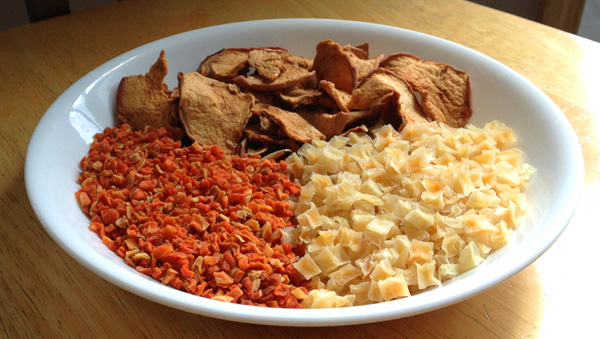
Shelf Life
Both freeze-drying and dehydration excel in extending the shelf life of foods by reducing their moisture content. This reduction in moisture is a crucial factor because it limits the availability of water for microbial growth and enzymatic reactions that cause spoilage. Here’s a closer look at the shelf life of products preserved using these methods:
- Freeze-Dried Shelf Life: Freeze-dried foods typically have an impressive shelf life. Depending on the specific product and packaging, they can last anywhere up to 30+ years. The extended shelf life is due to the minimal moisture content remaining in the food, which effectively inhibits the growth of bacteria, yeasts, and molds.
- Dehydration Shelf Life: Dehydrated foods also enjoy a substantial increase in shelf life compared to their fresh counterparts. However, they generally have a shorter shelf life compared to freeze-dried foods. Dehydrated products can last for several months up to a 10 years or more, depending on factors such as moisture content, storage conditions, and packaging.
Storage Conditions
- Freeze-Dried Food Storage: Freeze-dried foods are often packaged in moisture-resistant containers, such as vacuum-sealed pouches or cans. These containers help protect the food from moisture in the environment. To maximize shelf life, it’s important to store freeze-dried products in a cool, dark, and dry place. Avoid exposure to heat, humidity, and direct sunlight. Properly stored freeze-dried foods can maintain their quality for an long, long time.
- Dehydrated Food Storage: Dehydrated foods are typically packaged in airtight containers, such as vacuum-sealed bags or jars. While they have a longer shelf life compared to fresh foods, they are not as moisture-resistant as freeze-dried products. To preserve the quality of dehydrated foods, store them in a cool, dry place away from direct sunlight. Proper packaging and storage can help prevent moisture absorption and lock in the product’s shelf life.
Choosing the Right Preservation Method
When selecting between freeze-drying and dehydration, it’s important to consider your specific storage capabilities and needs.
- Freeze-dried foods often require less protective packaging and are more forgiving when it comes to storage conditions, making them suitable for long-term storage in various settings.
- Dehydrated foods, while still effective for extending shelf life, may require more attention to packaging and storage to maintain their quality over time.
Rehydration
The usability of preserved foods is a critical aspect to consider, especially when it comes to preparing and enjoying meals. Aka, how easy is it to transform preserved foods back into their original, palatable forms?
Rehydration Process
- Freeze-Dried Foods: Rehydrating freeze-dried foods is a quick, straightforward and hassle-free process. Most freeze-dried items can be revitalized in mere minutes by simply adding hot water, allowing them to absorb the liquid and regain their original texture, flavor, and appearance. The simplicity of this method makes freeze-dried foods an excellent choice for quick, on-the-go meals, backpacking, and emergency food supplies.
- Dehydrated Foods: Rehydrating dehydrated foods is also relatively simple, but it can vary depending on the type of food and the intended use. Common rehydration methods for dehydrated foods include soaking in hot water, simmering, or cooking in soups and stews. While these methods are effective, they may require a bit more time and attention than rehydrating freeze-dried foods.
Taste and Appearance After Rehydration
- Freeze-Dried Foods: When freeze-dried foods are rehydrated, they retain much of their original taste, texture, and appearance. Fruits still have their natural sweetness and shape, vegetables maintain their crispness, and meats maintain their tenderness. This preservation of freshness makes freeze-dried foods suitable for snacking, camping, and situations where you want the food to closely resemble its fresh counterpart.
- Dehydrated Foods: Dehydrated foods, when rehydrated, may not always fully recover their original texture. Some may become softer or have slight changes in flavor. However, the adaptability of dehydrated foods shines when incorporated into recipes that already have a lot of water/moisture content or require longer cooking times. Dehydrated foods readily absorb flavors from broths, sauces, and seasonings, making them a versatile ingredient in various dishes, such as soups, casseroles, and stir-fries.
Culinary Applications: Convenience vs. Creativity
- Freeze-Dried Foods: Freeze-dried foods are known for their convenience and are often used as standalone snacks (some freeze dried apple slices in your kids lunch), added into smoothies, or as toppings for cereals and desserts. They are also popular for quick, no-cook meals during outdoor activities. The convenience factor makes freeze-dried foods a preferred choice for hikers, campers and outdoor lovers who want lightweight, quick and easy-to-prepare meals.
- Dehydrated Foods: Dehydrated foods, while still suitable for outdoor adventures, shine in creative culinary applications. They can add flavor and nutrition to a wide array of recipes. Dehydrated vegetables, for example, are excellent for enhancing the flavor of soups, while dehydrated fruits can be rehydrated and baked into muffins or added to oatmeal. Their versatility allows home cooks to experiment with flavors and textures.
Weight and Portability
For backpackers and travelers, the weight of food is a critical consideration. Freeze-dried foods have the upper hand here, as they are much more lightweight and easy to carry than their dehydrated counterparts. This advantage can make a significant difference when packing for extended outdoor adventures.
Cost Considerations
Cost can be a significant factor when choosing between these preservation methods. Dehydrated products are often more budget-friendly due to their simpler processing requirements. Freeze-dried foods are sometimes pricier as they have more steps to go through to get to the final product, yet offer superior flavor, texture, and nutritional benefits.
To Recap:
Pros of Freeze-Drying
- Preservation of nutrients
- Retained flavor, texture, and shape
- Long shelf life
- Lightweight and portable
- Quick rehydration or even edible without rehydration
- Minimal food waste or spoilage
Cons of Freeze-Drying:
- Cost
- Energy-intensive
- Complexity for home use
Pros of Dehydrating Food:
- Extended shelf life
- Portability
- Versatility in cooking
- Minimal / less expensive equipment required
Cons of Dehydrating Food:
- Texture and flavor changes
- Nutrient loss
- Increased rehydration time
- Minimal weight reduction
Conclusion
In the world of food preservation, both freeze-drying and dehydration have their unique strengths and applications. Your choice between these methods should depend on your specific needs, whether it’s for home use, outdoor adventures, or long-term storage. It’s essential to appreciate the significance of both techniques in ensuring we have access to delicious and nutritious meals throughout the year.
Give us a shout if you have any questions about either of these methods. BridenAcademy@bridensolutions.ca


